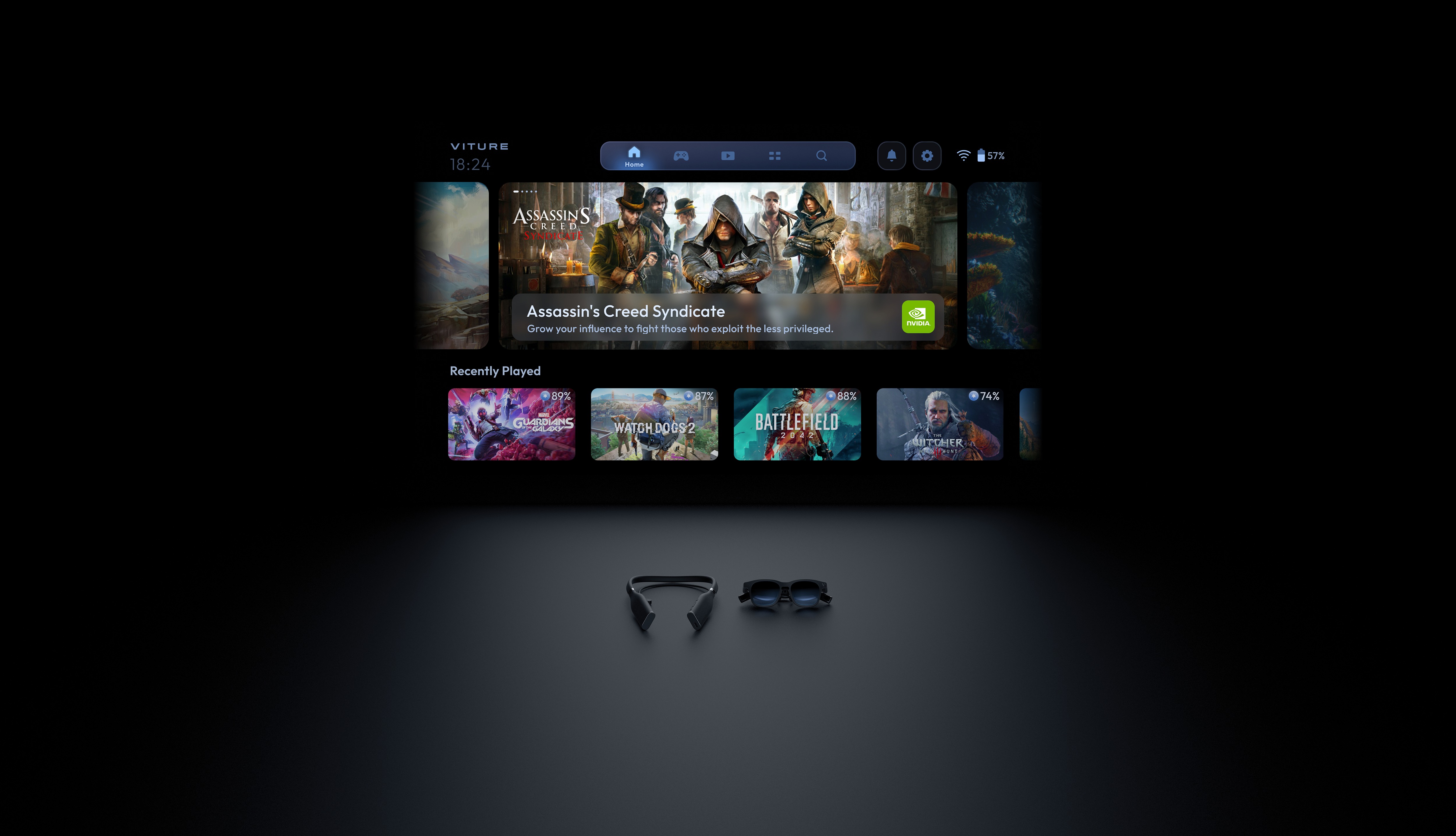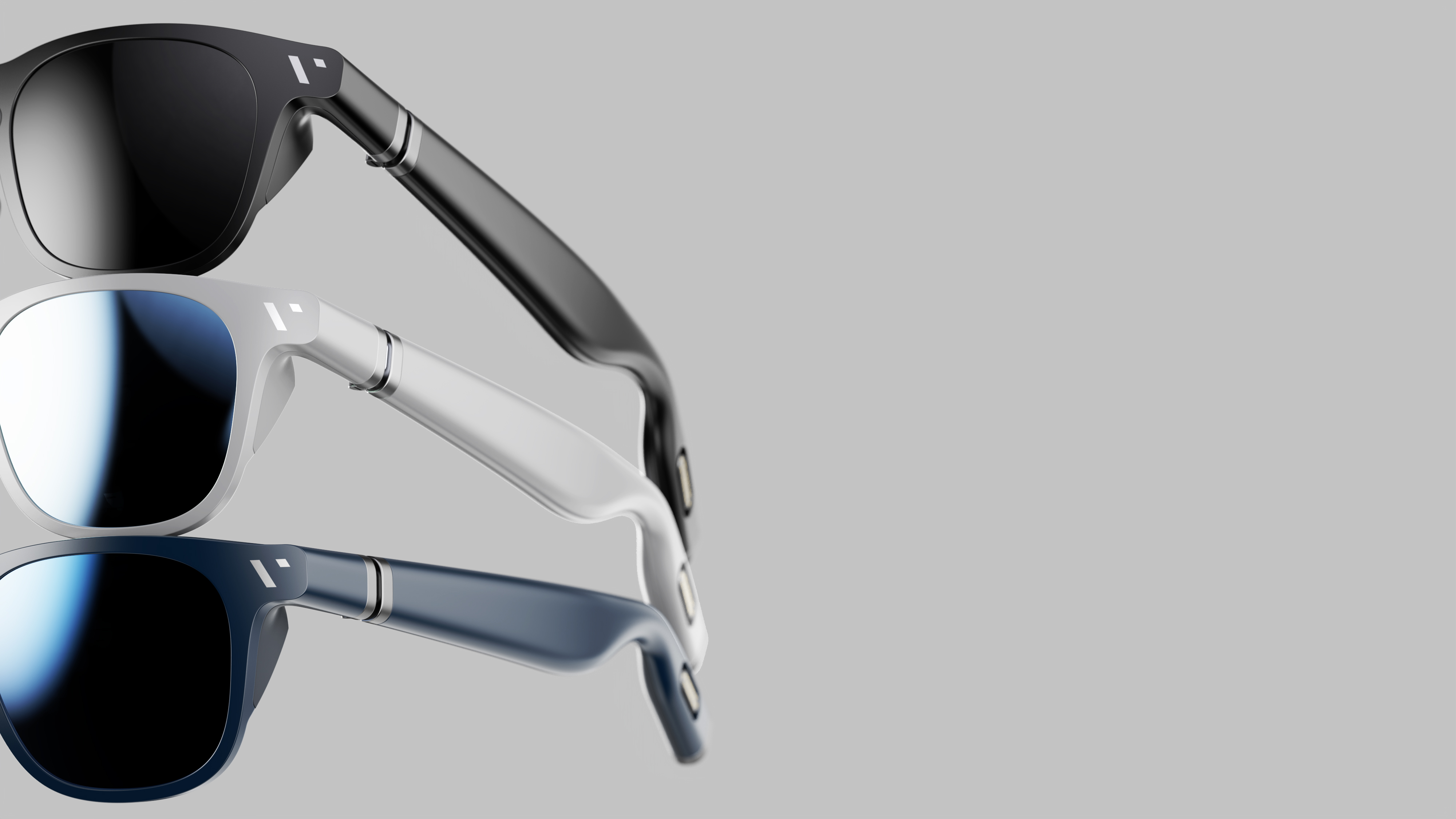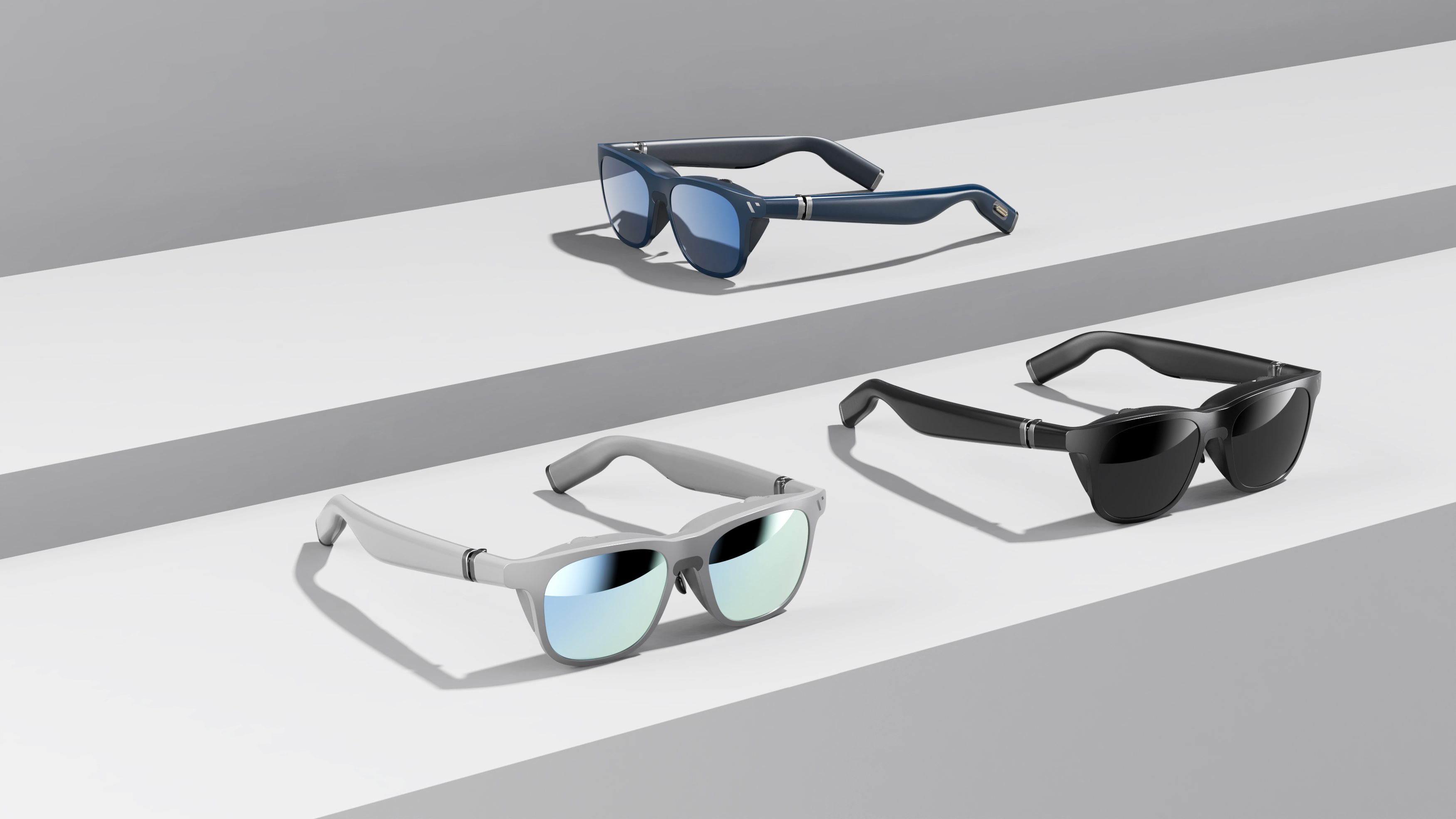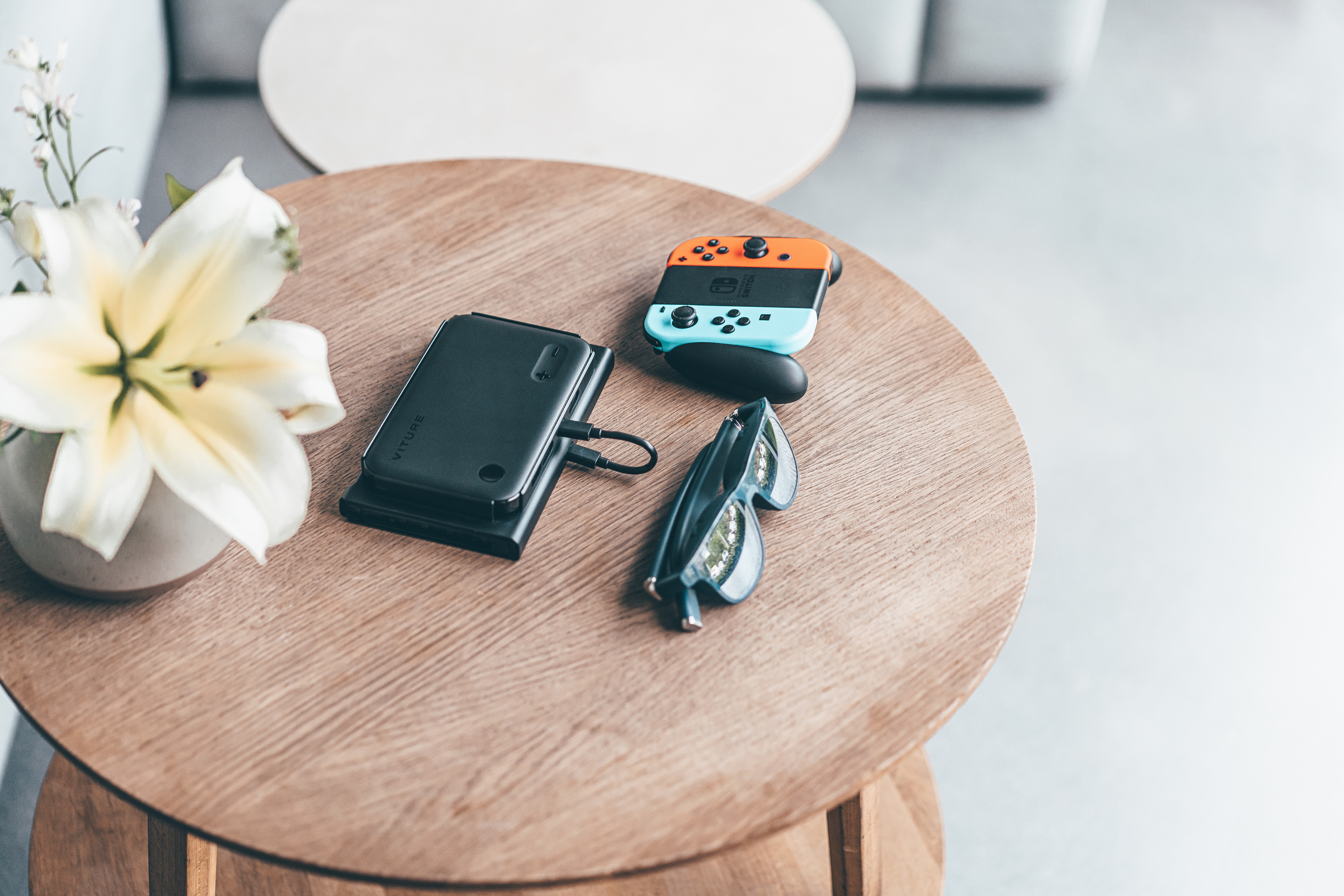When the original Oculus Rift landed on Kickstarter, it managed to raise over $2.43 million. But now, there’s a new name in town — at least when it comes to futuristic gaming.
The Viture One mixed reality (XR) glasses allow you to play games or watch movies from basically anywhere — and it just surpassed the Oculus Rift’s astonishing original fundraising effort on Kickstarter.
Viture, a San Francisco-based startup, was founded by Google and Apple veterans, and it’s managed to raise over $2.4 million on Kickstarter in just a month and a half, greatly surpassing the original $20,000 funding goal.
Just over 4,000 people are backing these new AR glasses, a far cry from the 9,522 that backed the original Oculus Rift campaign. Why the difference? Well, the Oculus Kickstarter offered many smaller tiers of backing that started at just $15 and included just a poster for backing. Viture’s campaign starts with pledges at $429, which includes the actual product itself.
The Viture One itself was designed intentionally to look like a stylish pair of sunglasses. The thought is that it’s supposed to be something people would want to wear daily, unlike a hefty virtual reality headset. Viture partnered with design firm Layer to help create the actual look of the glasses, which come in three color options: Black, blue, and white.
The two lenses combine to form a 120-inch 1080p virtual screen. Viture says that the pixel density is equivalent to a Mac Retina display (300 pixels to 400 pixels per inch) and that the image quality surpasses any VR headset.
The lenses also contain an electrochromic film that adjusts depending on environment. That electrochromic film has two modes: Immersive and ambient. Immersive allows the virtual screen to occupy most of your field of vision. Ambient mode minimizes the screen to the bottom corner to allow you to see the real world.
For those nearsighted folks who already wear glasses, the Viture One actually includes a dial to adjust the prescription of the lenses up to -5.0.
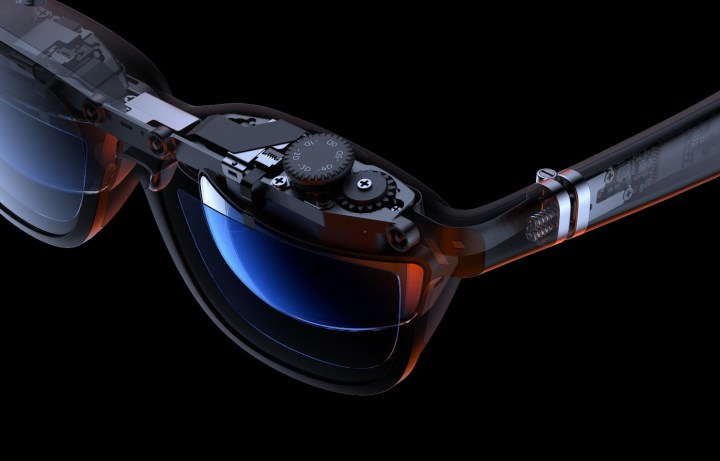
The glasses can be combined with a special neckband that powers the glasses and contains a control pad for the Android-based operating system. Viture touts the fact that the neckband weighs only 170 grams, which makes it lighter than the Bose Soundwear and Sony SRS-NS7.
Soundwise, there are embedded directional speakers in the stems of the glasses to provide private audio. Virture says it partnered with a “prestigious speaker company” to design the audio, though it didn’t specify the name of the company.
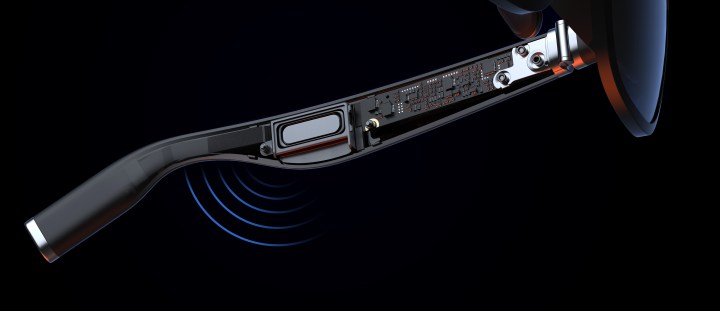
Outside of the hardware, the Viture One’s greatest feat is being able to stream games and media from anywhere using Wi-Fi or cellular.
Console games can be streamed using remote play apps like PlayStation Remote Play and Xbox Cloud Gaming. The Viture One includes support for both Xbox and PlayStation controllers. PC games can also be streamed using apps like Steam Link, AMD Link, Rainway, Parsec, or Shadow.
Because it runs Android, popular streaming apps such as Apple TV +, Disney+, and HBO Max come preinstalled. The company mentions that even 3D movies are supported.
For Switch owners, there is a separate attachment that acts as both an HDMI dock and battery pack. There’s even a “multiplayer mode” that allows two pairs of Viture One glasses to play on the same Switch using the two JoyCons.
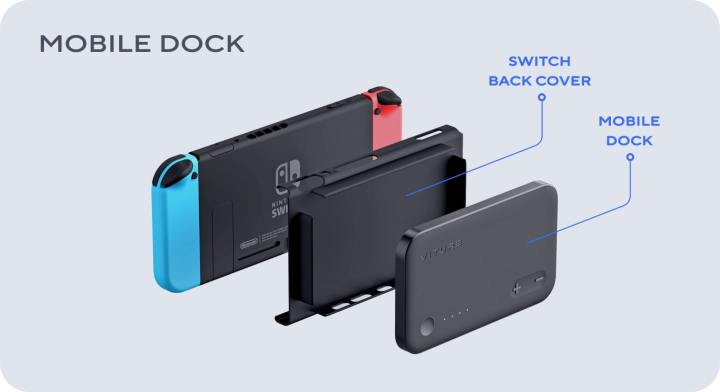
Finally, the Viture One is compatible with any USB-C device with video output. That would include Android smartphones, USB-C iPads, Macs, laptops, and even the Steam Deck.
The price starts at $429 for the Early Bird pledges and includes the glasses only. You’ll have to move up to $529 to get the neckband included. Those who want everything, including the dock, will have to shell out at least $629. Viture says the headset will sell for a retail price of $549.
Viture plans on shipping the first units to backers in October of this year.
Obviously, while the idea and concept itself sound exciting, Kickstarter claims are just that. Claims. All the same suggested rules around crowdfunding apply here, so we’ll have to see if the Viture One lives up to those claims.


